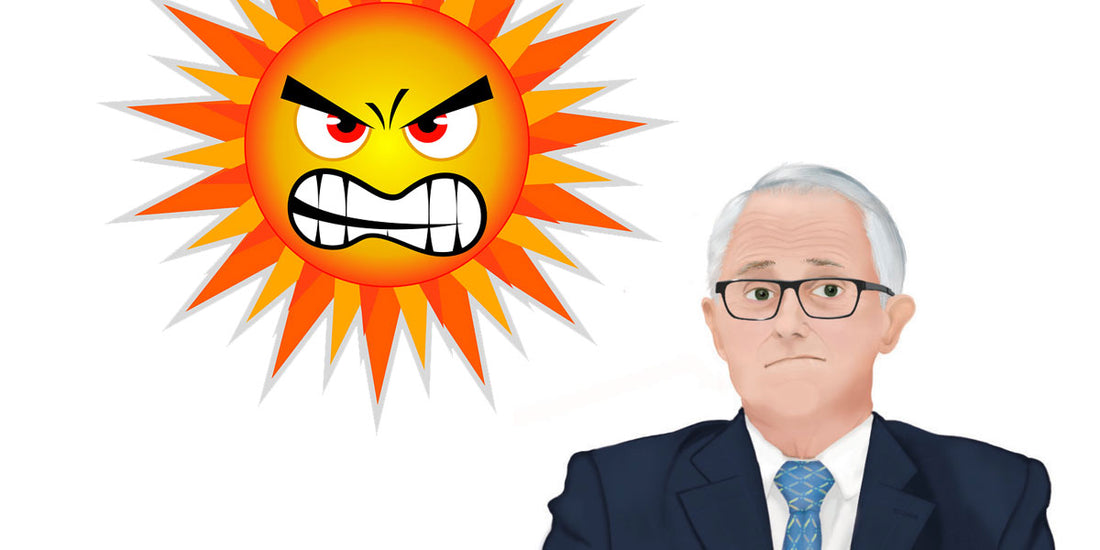
Malcolm Turnbull Reckons Renewable Energy Storage Is Cheaper Than Nuclear and Coal, But Is It?
Share
One of the most fuelled (pun intended) political arguments this side of the equator is Australia's energy policy.
You're either team fossil in practicality and ideals or team renewable, meaning a large scale overhaul of our entire infrastructure.
But is it as easy as that, or as cheap?
Well, no.
Current cost estimates are just that, estimates.
Renewables as a primary resource require storage in large quantities and also back up systems to buffer against intermittent outages and the like.
In no mincing words, we would need to overhaul the entire system and then include an entire back up system, which would add to the cost of renewables over time.
Countering this in favour of renewables is the ongoing fluctuations in interest rates expected of coal, clean up costs and continual costs of upheaval.
What we do know, pitting one dataset against the other, is after the initial expenditure into renewable conversion it is still more of a viable ongoing option than nuclear and coal.
In fact, the ongoing costs of renewables over coal are estimated to be half.
 The current state of coal.
The current state of coal.
Australia's power giant is undoubtedly coal, making up roughly 40% of our accumulative total and accounts for about 75 per cent of Australia's electricity generation.
The argument for coal as an ongoing resource has hit its peak with most power plants nearing the end of their expected lifetime and subsequent costs paid for.
Coal production sits at a current rate of $82.10 - $111.00, yet costs between $93.70 and $121.00.
The take away is often in the red.
Additionally, most said plants are reaching their 4th and 5th decade of life, with those in the latter expected to either receive costly inspections with applicable major upgrades. Those unfortunate enough to require more cost than they are worth will be closed, adding another tick to the box of renewables.
But which renewables are we talking here?

The current state of nuclear.
There's a yawning reason why nuclear has not taken off in Australia, as nuclear power costs 20-50% more than coal and plants would take approximately 15 years to build.
The argument for nuclear has been reinvigorated by some via smaller reactors. These are estimated to produce a considerable $250.10 - $326.70 per hour at a rate of $165 - $278 in cost, meaning a bulk of energy efficiency is lost if not also in the red much like coal.

The current state of renewables.
Australia has two widely available means of generating clean renewable energy and they are wind and solar, with and without storage.
These two are championed globally for their competitive cost and availability.
During 2018-2019, Australia installed approximately 10,400 megawatts of renewable energy - consisting of wind and rooftop/large scale solar - to the tune of 30% of the current peak demand.
Estimates by the CSIRO dictate production rates of:
- Wind between $51.20 - $64.40 per megawatt an hour.
- Solar between $44.50 - $61.50 per megawatt an hour.
Keep in mind, these are on the lower end to remain conservative.
And still, these estimates potentially trump fossil fuels in cost by the time infrastructure is all said and done as very little upheaval or labour costs are incurred.
Experts from the Victoria Energy Policy Centre maintain that upwards of 50% of our renewables would not need battery storage and the costs of doing so could push renewables into the territory of not being feasible. Hydroelectric storage is far far worse.
Said experts also counter this, concurring with Mr Turnbull, if we look at replacing expired power plants with renewable means as we go, making a smoother transition to curb the initial outlay of cost and in turn not bending over backwards updating old fossil powered plants.
Conclusion?
At the end of the day, is Mr Turnbull right?
We hate to do it to you, but maybe.
Generally, it is cheaper to produce electricity from wind or solar, but the issue of storage remains a highly contentious one.
Over time, the more we rely on renewables, the more storage we inevitably would need and thus the cost would bite into the efficiency of energy production.
And that is your crash course in all things power in Australia.
Of course, this is a superficial look at the current climate, with many a variable omitted for succinct clarity.
Please remember to like and share as we thrust harder into the deep unknown...
#Space_Aus

 The current state of coal.
The current state of coal. 



